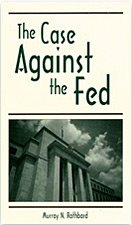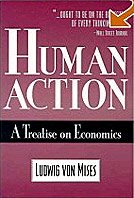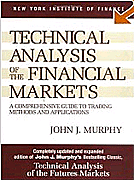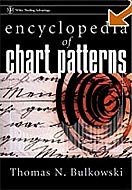Eric Sprott: Gold Tsunami
Ignoring real estate, most people invest their hard earned money in paper things. Stocks, bonds, annuities, insurance - it's all paper, and it sits nicely in our bank accounts and shows up on our computer screens. Halfway across the world, investors in China and India have never trusted paper investments as a store of value - and they're converting their hard earned paper money into gold and silver bullion. Not that this is anything new. It isn't. But the scale and speed with which they are accumulating precious metals IS new, and it's driving the fundamentals that we believe will lead to higher prices in 2011.
Demand for the metals is literally exploding in Asia, and it's creating shortages of physical bullion around the world. The statistics are extraordinary. China, the world's largest gold producer, now requires so much of the precious metal (in addition to what it already mines) that it imported over 209 metric tons (6.7 million oz) of gold during the first ten months of 2010. This represents a fivefold increase from the estimated 45 metric tons it imported in all of 2009.1
According to the World Gold Council, Chinese retail demand for gold increased by 70% from October 2009 to September 2010, representing a total of 153.2 tonnes of gold imports. Yet, over the same period, the demand for gold jewelry rose by only 8%.2 There is a clear trend developing for Chinese investment in gold as a monetary asset, and China is buying so much gold for investment purposes that it now threatens to supercede India as the world's largest gold consumer. Chinese demand in 2010 is expected to reach approximately 600 tonnes, just behind India's 800 tonnes.3 To put that in perspective, 2010 world mine production is forecasted to be 2,652 tonnes, which means China and India could collectively lock-up over half of global annual production.
Even more surprising is the increase in Chinese demand for silver. Recent statistics show that silver imports have increased fourfold from 2009 to 2010. In 2005, the Chinese exported just over 100 million oz. of silver.4 In 2010, they imported just over 120 million oz. This represents a swing of 200 million+ oz. in a market that supplied a total of 889 million oz. in 2009 - a truly tectonic shift in demand!5
We are seeing widespread evidence of major shortages of physical gold and silver bullion across the globe. The Perth Mint recently stated that: "Demand for our coins and medallions is strong, but the biggest demand is coming from banks and traders looking for kilo bars."6 Three weeks ahead of Chinese New Year, Asian dealers were reporting premiums in mainland Chinese gold exchanges of $23 per ounce.7 Even Jim Cramer has acknowledged the current shortage in minted US gold coins, stating on his CNBC television show in December that: "As someone who tried to buy U.S. coins in December, there was a real scarcity. My dealer reportedly just couldn't get any coins - tried to sell me Australian bullion. Said there was a shortage. Very telling."8
While Chinese New Year celebrations typically drive gold demand in the month of January, there are stronger forces at work here. The Chinese are fighting the resurgence of inflation. To protect their wealth, the populace is turning to gold and silver as a store of value. Precious metals ownership is a relatively new phenomenon in China, where Chinese citizens have only been able to purchase gold freely within the last ten years. Ownership restrictions were lifted in 2001 when the Chinese central bank abolished its long-term government monopoly over gold. The Shanghai Gold Exchange was then created in October 2002 to replace the People's Bank of China's gold purchase and allocation system, thus ushering in a new era of gold investment in China.9 Investor interest in precious metals has increased dramatically since then, and new investment products are making gold more convenient to purchase and easier to own.
One such program recently caught our eye and speaks to the new era of gold investment within China. On April 1, 2010, the World Gold Council and Industrial and Commercial Bank of China (ICBC) issued a press release announcing a strategic partnership.10 Though seemingly innocuous, this press release introduced a completely new investment product for Chinese investors: The ICBC Gold Accumulation Plan ("ICBC GAP"). ICBC GAP allows investors in mainland China to accumulate gold through a daily dollar averaging program. The minimum investment required is either 200 RMB per month or 1 gram of gold per day (equivalent to approximately US$42).11 Customers may renew the contracts at maturity, convert them into cash or exchange them for physical gold. The accounts are perfect for investors who want to accumulate gold over the long-term. While gold accumulation plans exist in Japan, Switzerland and other countries, this is a first for mainland China. Kudos to the World Gold Council for their efforts in setting up and promoting the program.
The most significant fact related to the ICBC GAP program is how fast it has captured the investing public in China. One million accounts have already been opened since the program launched on April 1st, resulting in the purchase of over 10 tonnes of gold thus far. According to press releases, the ICBC GAP plan was taken up by a mere 20% of total depositors at ICBC, and was only launched in select Chinese cities during the test phase. The ICBC bank just happens to be the largest consumer bank on earth with approximately 212 million separate accounts. If we apply some realistic assumptions and arithmetic, it's easy to imagine how large this program could potentially become.
Suppose, for example, the ICBC GAP plan were expanded to cover all ICBC depositors, and also expanded to the next four largest Chinese banks. Let's further assume that the gold purchases within the plan enjoyed the same rate of growth as the test phase mentioned above. If we add all these numbers together, it results in gold purchases of an extra 300 tonnes of gold per year, or over 10% of the estimated 2010 global gold production.
The implications of this burgeoning Chinese demand for the gold market are immense. If these predictions prove accurate, the ICBC GAP plan could become the single largest buyer of physical gold on the planet. Considering that the program has only been launched in one Chinese bank thus far, imagine if it were extended to other institutions or other large gold consuming countries such as India, Russia or Turkey?
Speaking from Japan, the head of the World Gold Council recently commented on the early success of the ICBC GAP plan in China: "Here in Japan, it has taken over 10 years for the gold-savings account industry as a whole to reach 700,000 accounts. It is impressive that only one Chinese bank can exceed that level so easily, within one year, without PR or active marketing in-branch." The World Gold Council does their own arithmetic on how much gold the Chinese can consume: "In 2009, per capita gold consumption in China was 0.33 grams, up from 0.17 grams in 2002." Based on this data total Chinese gold consumption could range from 1,000 tonnes per year or more.12 This implies that the Chinese could consume almost half of the gold produced globally on an annual basis.
The ICBC Gold Accumulation Plan and other alternate methods of investing in gold have the potential to overwhelm current supply in the gold market. If a similar program were launched for silver accumulation, in the same dollar terms at current prices, it would consume over half of the silver produced each year! In Asia, only physical gold and silver will do and unlike the supply of treasury bills, bonds or paper currencies, the supply of physical gold and silver is undoubtedly finite.
We believe Asian demand for physical gold and silver is akin to a tsunami. While precious metals prices have corrected on the paper exchanges, the inflation resurgence in Asia is quietly driving new, unforeseen levels of physical demand for the metals. While the world continues to float on a sea of paper, this massive wave of physical demand silently threatens to crash into the physical gold and silver market, potentially wiping out tangible supply.
_______________________________
1. Hook, Leslie. (December 2, 2010) China's gold imports surge fivefold. Financial Times. Retrieved on January 31, 2011 from:
2. D'Altorio (December 30, 2010) China's Gold Rush. Investment U. Retrieved on January 31, 2011 from:
3. Pearson, Madelene. (January 12, 2011) Gold Imports by India Likely Reached Record, WGC Says. Bloomberg Businessweek. Retrieved on January 31, 2011 from:
4. (December 2, 2010) Gold Imports by China Soar Almost Fivefold as Inflation Spurs Investment. Bloomberg. Retrieved on January 31, 2011 from:
5. The Silver Institute. Demand and Supply in 2009. Retrieved on January 31, 2011 from:
6. Campbell, James (January 12, 2011) Unrelenting demand for gold below $1400 - Perth Mint. Retrieved on January 30, 2011 from:
7. Ash, Adrian (January 12, 2011) Shanghai Gold Premium Hits $23/Oz, China Opens 1 Million Gold-Savings Accounts. London Gold Market Report. Retrieved on January 31, 2011 from: http://www.resourceintelligence.net/shanghai-gold-premium-hits-23oz-china-opens-1-million-gold-savings-accounts/14715
8. CNBC: Buy this pause in gold's bull run, "Mad Money" host Jim Cramer advises. Retrieved on January 31, 2011 from:
9. China Gold Report: Gold in the Year of the Tiger. The World Gold Council (March 29, 2010). Retrieved on January 31, 2011 from: http://www.gold.org/download/rs_archive/WOR5797_Gold_Invest_Report_China_Web.pdf
10. World Gold Council (April 1, 2010) World Gold Council and ICBC Enter into Strategic Partnership to Promote China's Gold Market. Retrieved on January 31, 2011 from: http://www.gold.org/download/pr_archive/pdf/ICBC_MOU_010410_pr.pdf
11. World Gold Council. (December 16, 2010) World Gold Council and ICBC launch first gold accumulation plan in China. Retrieved on January 31, 2011 from:
http://www.gold.org/download/pr_archive/pdf/2010-12-16_ICBC_GAP_release.pdf
http://www.gold.org/download/pr_archive/pdf/2010-12-16_ICBC_GAP_release.pdf
12. Ash, Adrian (January 31, 2011) Gold Shorts Beware China's Million-Strong Gold Savers. Forbes. Retrieved on January 2011 from:
http://blogs.forbes.com/greatspeculations/2011/01/13/gold-shorts-beware-chinas-million-strong-gold-savers/
http://blogs.forbes.com/greatspeculations/2011/01/13/gold-shorts-beware-chinas-million-strong-gold-savers/
Labels: China, Eric Sprott, gold, inflation, silver















![[Most Recent Quotes from www.kitco.com] [Most Recent Quotes from www.kitco.com]](http://www.kitco.com/images/live/t24_au_en_usoz_6.gif)
![[Most Recent Quotes from www.kitco.com] [Most Recent Quotes from www.kitco.com]](http://www.kitco.com/images/live/au_go_0030_ny.gif)
![[Most Recent Quotes from www.kitco.com] [Most Recent Quotes from www.kitco.com]](http://www.kitco.com/images/live/au_go_0365_ny.gif)
![[Most Recent Quotes from www.kitco.com] [Most Recent Quotes from www.kitco.com]](http://kitconet.com/charts/metals/silver/t24_ag_en_usoz_4.gif)

















0 ΣΧΟΛΙΑ (COMMENTS):
Post a Comment
<< Home